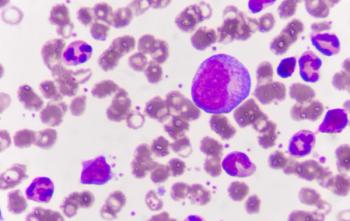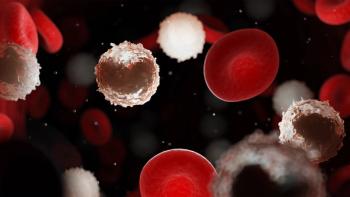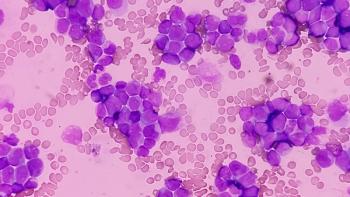
TAR-200 Granted Priority Review for Non–Muscle-Invasive Bladder Cancer
Based on durable response data, TAR-200 has been given priority review for the treatment of patients with high-risk non–muscle-invasive bladder cancer.
The FDA has granted priority review to Johnson & Johnson’s new drug application (NDA) for the intravesical gemcitabine-releasing system TAR-200 for use in patients with Bacillus Calmette Guérin (BCG)-unresponsive high-risk non-muscle-invasive bladder cancer (HR-NMIBC) with carcinoma in situ (CIS), according to a news release from the company.1
If approved, patients with HR-NMIBC will be eligible for treatment with TAR-200 regardless of papillary tumor status.
“TAR-200 represents an innovation in drug delivery that has not been seen in decades,” noted Yusri Elsayed, MD, MHSc, PhD, global therapeutic area head of oncology at Johnson & Johnson, in the release. “The FDA priority review for TAR-200 underscores our mission to fundamentally change the way urologists treat certain types of bladder cancer.”
The
TAR-200 is administered via a co-packaged urinary placement catheter, which takes less than 5 minutes, according to the release, without need for general anesthesia, additional monitoring or restrictions post-insertion. The treatment remains in the bladder for 3 weeks after administration.
Efficacy of TAR-200 in High-Risk Non–Muscle-Invasive Bladder Cancer
SunRISe-1 observed patients with BCG-unresponsive
As of the March 31, 2025, data cutoff, investigator-assessed and centrally confirmed complete response (CR) were observed in 83.5% (95% CI, 73.9-90.7) and 82.4% (95% CI, 72.6-89.8) of all patients (n = 85), respectively. At 12 months, the observed CR rate was 45.9%, with an estimated median duration of response (DOR) of 25.8 months (95% CI, 8.3-NE). Of note, 56.2% (95% CI, 43.4-67.1) of patients experienced a DOR of at least 1 year.
Additionally, 11 patients received therapy for at least 2 years, and 9 remain in response to TAR-200. At baseline, patients had high mean Global Health Status (GHS) and Physical Functioning (PF) scores, and scores remained stable during treatment and did not change by a clinically meaningful interval.
The median age of enrolled patients was 71 years (range, 40-88), 80% of whom were male, and 33% of whom had concurrent papillary disease.
Safety Data on TAR-200 for Patients With and Without Papillary Disease
The majority of patients (83.5%) in cohort 2 of SunRISe-1 experienced treatment-related adverse effects (TRAEs) on trial. Most TRAEs were low-grade lower urinary tract AEs. Eleven patients (12.9%) had grade 3 or higher TRAEs, 5 (5.9%) had serious TRAEs, and 3 (3.5%) discontinued treatment due to toxicity. No deaths related to treatment with TAR-200 occurred.
Safety and Efficacy Data for Patients With Papillary Disease
Data from cohort 4 of SunRISe-1, which investigated the use of TAR-200 only in patients with papillary disease (n = 52), was also shared at the 2025 AUA Annual Meeting and in The Journal of Urology. Patients in this cohort had 6- and 9-month disease-free survival rates of 85.3% (95% CI, 71.6-92.7) and 81.1% (95% CI, 66.7-89.7), respectively. The median follow-up was 12.8 months (range, 4-17), and the median age was 71 years (range, 42-88).
Results from this cohort demonstrated that 42 patients (81%) had TRAEs, most of which were also low-grade lower urinary tract events, including dysuria (40%), pollakiuria (31%), micturition urgency (27%), and urinary tract infection (23%).3
In this patient population, 13% of patients had grade 3 or higher TRAEs, most commonly bladder pain (4%). Likewise, 3 had serious TRAEs, and 4 patients discontinued treatment as a result of toxicity, and no treatment-related deaths occurred.
References
- Johnson & Johnson receives U.S. FDA Priority Review for TAR-200 NDA in high-risk non-muscle invasive bladder cancer. News release. FDA. July 17, 2025. Accessed July 17, 2025. https://www.prnewswire.com/news-releases/johnson--johnson-receives-us-fda-priority-review-for-tar-200-nda-in-high-risk-non-muscle-invasive-bladder-cancer-302507112.html
- Jacob JM, Guerrero-Ramos F, Necchi A, et al. TAR-200 monotherapy in patients with Bacillus Calmette-Guérin–unresponsive high-risk non–muscle-invasive bladder cancer carcinoma in situ: 1-year durability and patient-reported outcomes from SunRISe-1. J Urol. 2025;213(5S2):e2. doi:10.1097/01.JU.0001111604.90306.91.03
- Guerrero-Ramos F, Jacob JM, van der Heijden MS, et al. TAR-200 monotherapy in patients with Bacillus Calmette-Guérin–unresponsive papillary disease–only high-risk non–muscle-invasive bladder cancer: first results from cohort 4 of SunRISe-1. J Urol. 2025;213(5S2):e2. doi:10.1097/01.JU.0001111604.90306.91.04
Newsletter
Knowledge is power. Don’t miss the most recent breakthroughs in cancer care.
















































































